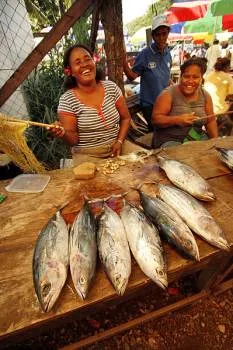Given the impending expiration of the MDGs, this article’s timely revision of the means of assessing extreme global poverty demonstrates how “dollar a day” measurements (now adjusted to $1.25) lack anchorage in specific human requirements, failing to provide a multidimensional understanding of poverty.

And this is particularly problematic for poverty assessments in South East Asian countries, such as Vanuatu, home to a largely rural, agricultural society, where the lack of governmentally legislated social welfare programs is substituted with familial support networks. The data reveals how the percentage of children living in extreme poverty grows astonishingly from 5.4% to 30.3% as we move from basic economic measurements prescribed by the World Bank (5.4%) towards incorporations of absolute poverty defined as two or more severe deprivations (16.4%), food and basic needs poverty lines (17.0%), and finally comparisons against median incomes (30.3%), which help to reveal degrees of inequality. Moreover, the researchers caution against the limitations of household surveys, which cannot account for the homeless and institutionalized.
Abstract
Debate over the measurement of global poverty in low- and middle-income countries continues unabated. There is considerable controversy surrounding the ‘dollar a day’ measure used to monitor progress against the Millennium Development Goals. This article shines fresh light on the debate with new empirical analyses of poverty (including child poverty), inequality and deprivation levels in the Pacific island state of Vanuatu. The study focuses not only on economic and monetary metrics and measures, but also the measures of deprivation derived from sociology in relation to shelter, sanitation, water, information, nutrition, health and education. Until recently, there had been few, if any, attempts to study poverty and deprivation disparities among children in this part of the world. Different measures yield strikingly different estimates of poverty. The article, therefore, attempts to situate the study findings in the broader international context of poverty measurement and discusses their implications for future research and the post-2015 development agenda.
Citation
C. Deeming, B. Gubhaju. The mis-measurement of extreme global poverty: A case study in the Pacific Islands. Journal of Sociology, 2014; DOI:10.1177/1440783314523867
Read the full paper here.




Comments (0)